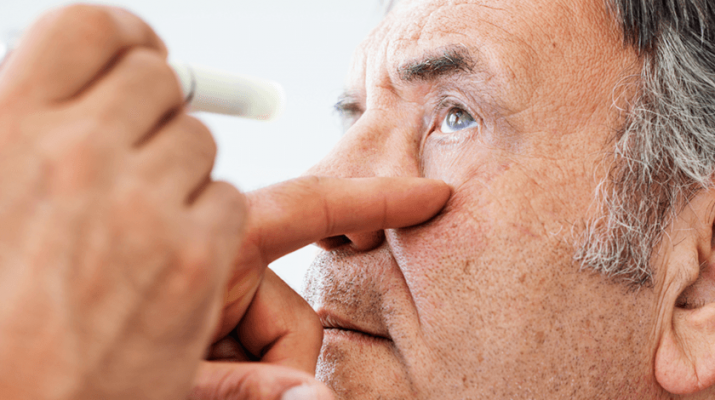Droopy eyelids, dry eyes, floaters, cataracts, ocular migraines are just some of the eye problems we may have to deal with as we age
By Deborah Jeanne Sergeant
As you begin to “play trombone” with your reading materials to get them in focus, it becomes apparent you may need reading glasses. Most people require correction for presbyopia — short distance vision — around their mid-40s to early 50s. While an unwelcomed sign of aging, it’s easily corrected with drugstore “cheater” glasses.
Less common are other changes in vision related to aging. Some are more serious than others.
To tell the difference between what’s normal and what’s not, Astrid Ranaldi, optometrist at Eyecare of CNY in Syracuse, recommends annual eye exams and to seek care with any loss of vision. “Occasionally check to see if each eye sees the same. A lot of times, people miss this and they have macular degeneration. If caught right away, it can make a big difference in the outcome,” Ranaldi said
People with macular degeneration lose their central vision as part of the retina starts to break down. They see only things on the periphery. With a physician’s guidance, its progress can be slowed, but not cured.
Family history plays a role in glaucoma, which is damage to the optic nerve. Usually, loss of the peripheral vision indicates onset. The lost vision cannot be restored. The risk of vision loss is higher for people with certain health issues. Diabetics and those with hypertension should be especially vigilant about their vision.
Also report any pain, irritation, flashes or black spots.
“These can be normal or not normal,” said David Girardi, optometrist with See Sharp Eyewear in East Syracuse. “When you have flashes and floaters, it’s usually an indication you need an evaluation. If it’s not normal, it can lead to a big problem like a detached retina.”
Slowly, over time, cataracts can develop in older age, although for diabetics and those with hypertension, they can develop in younger people. The vision becomes dim and more yellow in tone and night driving becomes very difficult. The lens, which sits behind the iris, becomes cloudy.
Physician Sharon Brangman, professor of medicine and head of the geriatric department at SUNY Upstate Medical University, said that cataracts are caused by exposure to sunlight. Wearing sunglasses that protect against UV rays can help protect the eyes.
“Smoking and certain medications also increase risk,” Brangman said. “Get a yearly eye exam. If the lens of the eye gets cloudy and thick, that is a cataract and it can distort vision and blur vision and it can be replaced.”
Exposure to UV light, diabetes and certain medication can hasten the otherwise age-related condition. With a 10-minute, outpatient surgery, doctors can replace the lens with an artificial lens. It has become perfected to the point that few experience complications and most patients respond very well.
“In general, it’s always better to intervene earlier than later,” Brangman said. “I have people with poor vision and if they also have poor hearing, they look like they have dementia because they don’t have sensory input. Invariably, I have patients after cataract surgery who say they shouldn’t have waited so long. It can be sociality isolating and can increase risk of dementia.”

